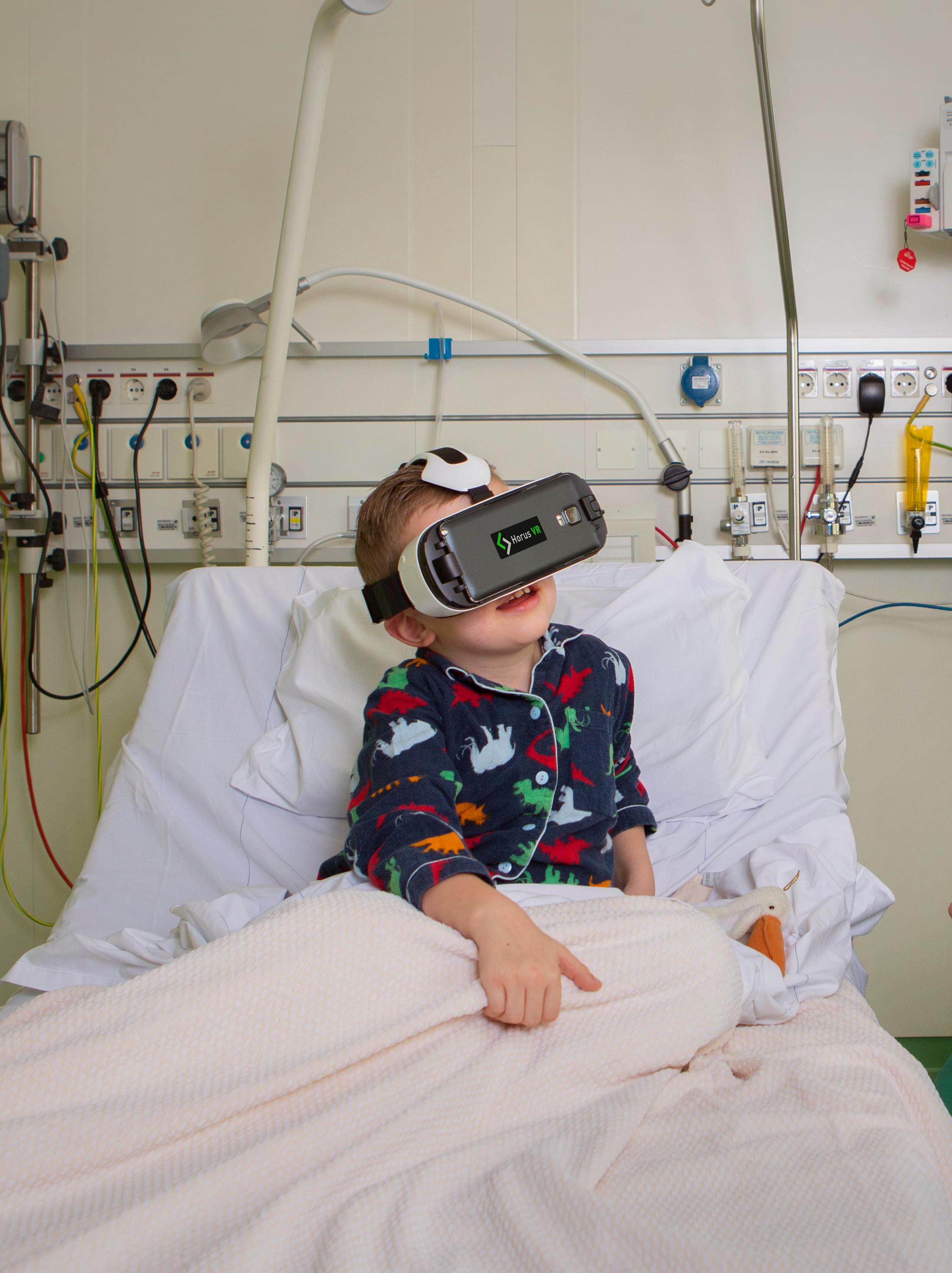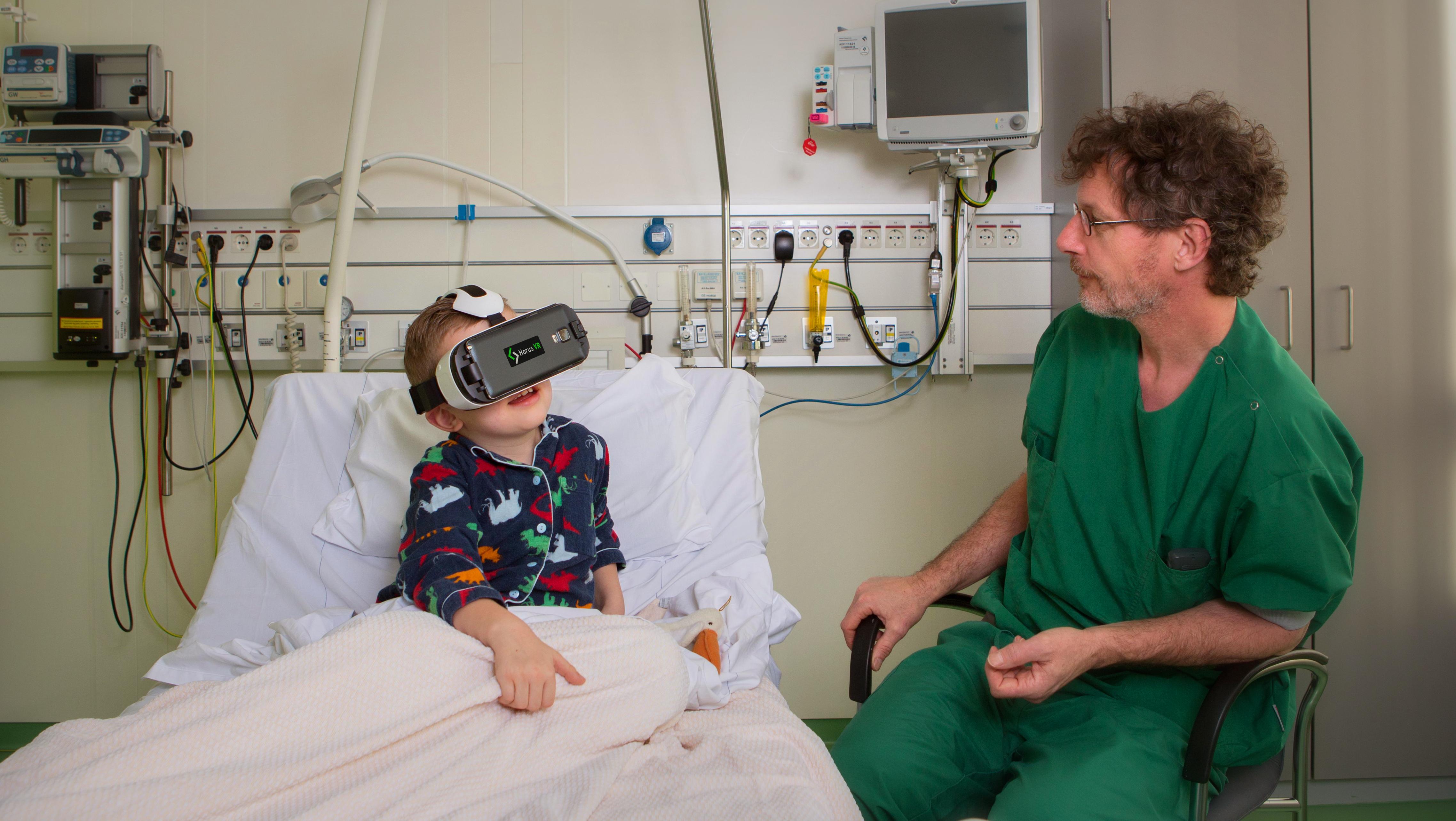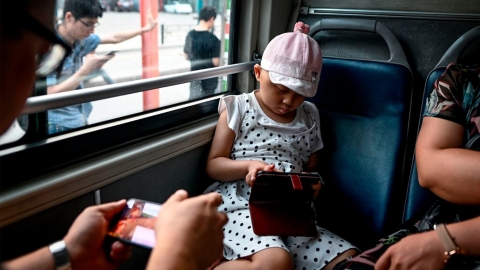This is part of an initiative by UZA in collaboration with Belgian telecommunications group Telenet. Accordingly, images of patients' homes or schools can be projected through VR glasses via 5G connection, helping children feel as if they are present at their beloved home or school.
The VR system consists of a VR robot developed by the Dutch company Horus VR, equipped with a 360-degree camera, microphone, speakers and an internet connection, placed in a room the patient wants to go to. The robot is then connected to the VR glasses that the patient wears in the hospital and by moving his head, the patient can look around the room where the robot is placed, see what is going on there and talk to the people present.
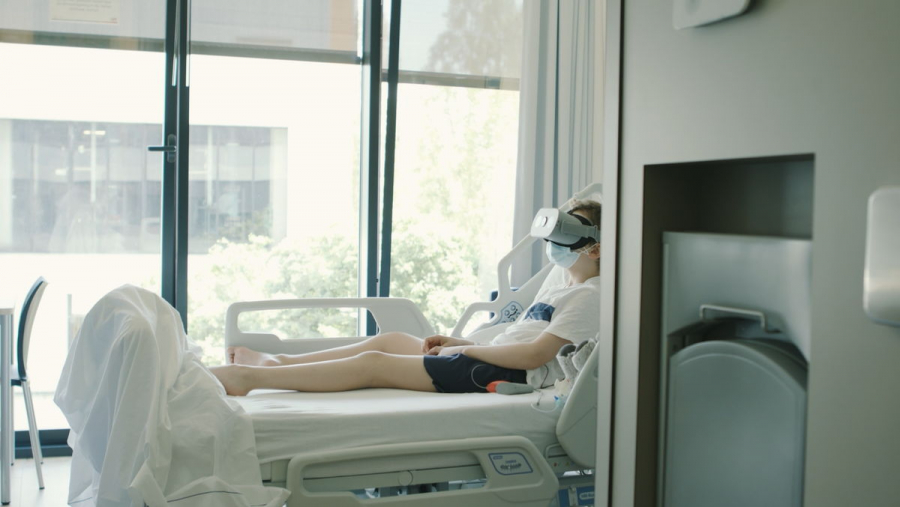
Paul Van Aken, Director of Patient Care at UZA, said that long hospital stays often cause psychological burdens for patients and their families, especially in the past year, when the pandemic raged in Europe. VR and 5G technology can alleviate this problem, while creating a “realistic” connection between children and their home or classroom environment.
“It was nice to feel at home for a while because in the hospital everything is usually the same. With the VR, it was like I was at home,” said Cédric Van Den Bogaerde, a 13-year-old patient who tested the VR system.

VR technology is said to improve the sound and image quality much more than the usual video call via smartphone, especially when wearing VR glasses, the patient feels like he has returned to home or school in a split second. Previously, various tests with VR systems were carried out at UZA and the project initiators evaluated the test results as very successful.
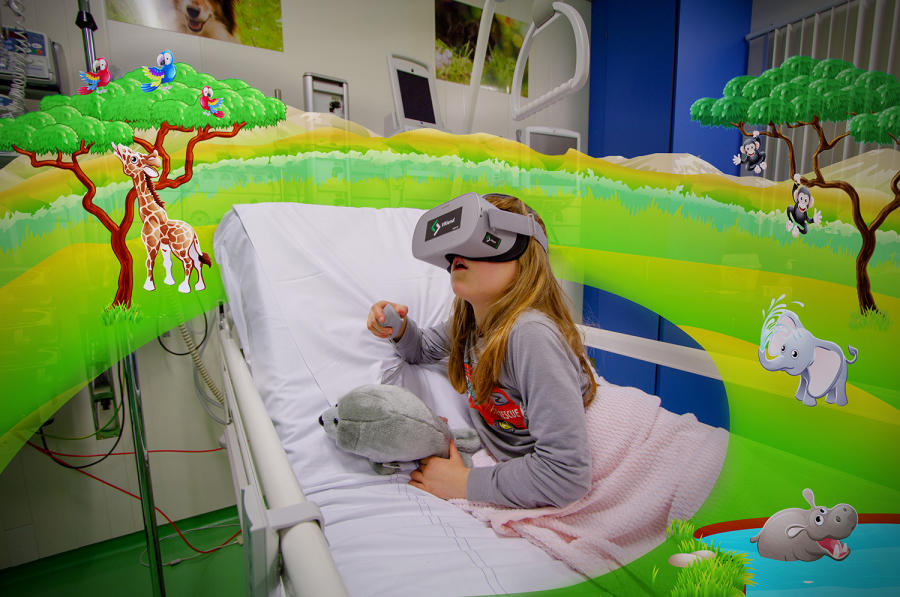
For now, this is a pilot project, but the initiators hope that in the long term, similar applications can be deployed elsewhere. To fully exploit the potential of VR, high-speed 5G connectivity is required, so wider deployment will depend on 5G coverage in Belgium.
Telenet's 5G innovation director, Piet Spiessens, said: "5G is 20-30 times faster than current 4G networks. Not only can images be transmitted faster, but the quality is also maintained at an optimal level. This project will become a good example of how 5G can be used more and more in the future."





